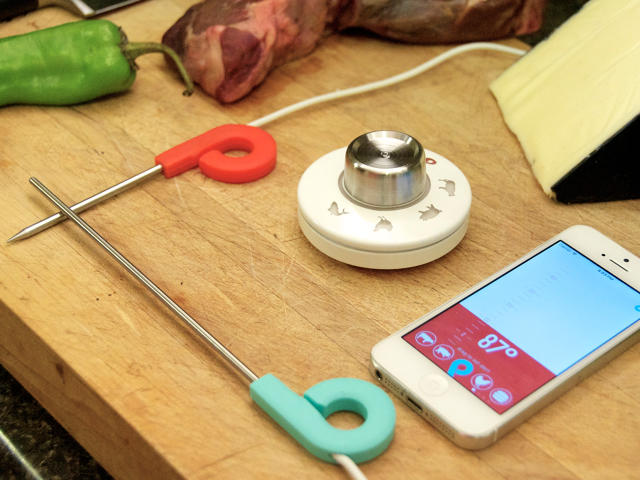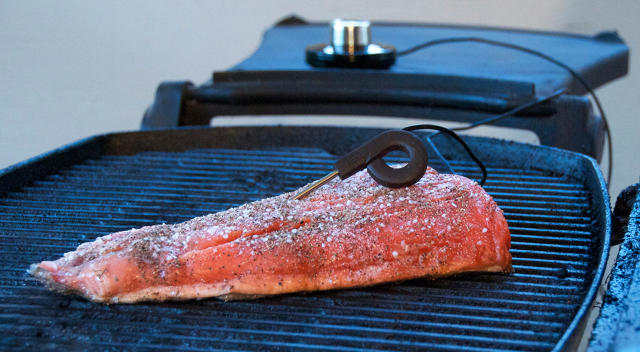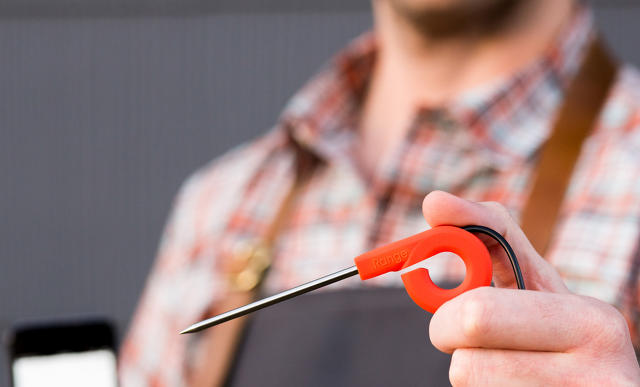What A Kickstarter All-megastar realized From surprising Failure
the corporate behind wire had its remaining product flop on Kickstarter. Having licked its wounds, it can be ready to move once more.
October 14, 2015
a new product called the vary Dial ($64) simply hit Kickstarter, and has all of the makings of a hit. It’s a thermometer attached to a metal and silicone dial that you spin to an icon of option—a rooster, or a cow, or a fish. You stick the probe into your protein of possibility, spin the dial, and when your meals reaches cooked temperature, the Dial will chime that it’s finished, and ship an alert to your smartphone via Bluetooth when you’d like.
vary Dial is discreet enough for a Luddite to remember, powerful sufficient to tempt critical hackers and home cooks, and priced just low enough to tempt anyone who has ever grew to become on a range.

in fact, Kickstarter is never a certain factor, and no one is aware of that higher than John Kestner, predominant of the corporate behind the diversity Dial, Supermechanical. He hit it big on the crowdfunding website online early along with his first venture out of MIT Media Lab, the programmable environmental sensor cord. looking for $35,000 on Kickstarter, it raised a whopping $556,000 in preorders. His second undertaking, a relatively barebones iPhone cooking thermometer called vary, raised a respectable $177,000 (almost doubling its $ninety,000 goal).
but his 1/3 product, the range IO, rapidly stumbled. A extra bold form of thermometer, vary IO—which housed a modernist butcher block, sensing gestures like double faucets in your oven that promised to show your old fuel oven sensible—flopped. neatly, technically, it obtained $121,000 in preorders, but that fell some distance short of Kestner’s $250,000 purpose, and his company didn’t get a dime.

“It was horrible,” Kestner laughs. “We had a child just a few months after that failure, so it used to be a good psychological spoil. but it surely actually sucked. For a month or two in a while, we had to let people go. That was once the worst section. I didn’t want to be making kitchen thermometers anymore. It was once like, ‘I don’t understand this market.'”
however after a few months, Kestner realized that Supermechanical had invested too much R&D in this world of sensible thermometers and cooking merchandise to simply walk away.
“the great thing about Kickstarter, and opening your self to this kind of public failure, is you will have an immediate connection with consumers,” he explains. “Even earlier than the failed campaign was over, I was sending them surveys, asking them what they cared about. I realized they didn’t care about [many] options that just brought price.”
Designing A Comeback
Kestner’s feedback contained a couple of complaints. His dramatic industrial design, based totally upon a knife block, didn’t resonate with a variety of shoppers.
“the big idea on having this kind of large bulky factor used to be it used to be a good position to store the cords,” he says, “but nobody perceived to care about that as much as the price.”

It’s genuine: wire management is incessantly lost sight of via consumer tastes. (How many individuals actually notice that a swish Amazon fire Stick will require a power cord running down the back of their television when they order it?) And slicing down the size would cut down the supplies, which might reduce down the fee, which may minimize down the sale value.
“i think it felt a little too techie,” he continues. “When you need to take hold of people with a photograph and a few strains of textual content, it needs to be, ‘i know this factor belongs in a kitchen,’ and it without a doubt didn’t appear to be that.”
Kestner starting striking out so much at Williams-Sonoma examining other products on the shelves. And because of this, the Dial used to be developed in silicone and metal, in addition to equipment-friendly black and white, slightly than coated within the bright colours of brand new tech products.
Kestner’s crew—which had reduced in size from 5 to three following layoffs—additionally neglected all of the web of things-primarily based characteristic creep that had derailed its remaining product. the diversity Dial wouldn’t have features like the flexibility to double-faucet your oven. and because so many polled Kickstarters have been simply searching for the dumbest functionality imaginable, the Dial can be an absolutely practical appliance with out a smartphone.

“Fetishizing laptop paradigms and cramming them into the whole lot is why web of things is a grimy time period now,” Kestner says. “To borrow a phrase, connectivity and a touchscreen interface are features, now not a product.”
(It occurs that smartphones are a awful thing to have around hot stoves and boiling drinks, too.)
to soothe his extra hardcore fanbase—the wire-fashion tweakers who wished customizability past the straightforward icon-primarily based dial—Kestner buried deeper customization options throughout the accompanying app. So cooks who want their pork cooked to rarer temperatures, or beer brewers wanting very particular temperature settings, might reach those settings in the app. And an SDK will allow developers to hack the product on their own, too, updating the firmware as they like.
yet whilst Kestner tells me these deeper choices, it’s with a mix of satisfaction and excessive hesitation.
“I’ve been shy about muddying the message,” he says. “last time, I threw the whole lot on the wall!”
decreasing Expectations
in fact, if there is one obvious factor that Kestner did otherwise this time around, it is that he diminished his venture’s goal considerably. His ultimate venture wanted $250,000 in preorders to launch. The Dial requires simply $60,000 to get out the door.

This decrease threshold is imaginable in part as a result of his workforce has accomplished so much of the design and engineering work already—and in-house as well—in order that they won’t want so many dollars to get the product off the assembly line. however additionally it is only a smarter manner for a extra mature company. A overwhelming majority of Supermechanical’s trade would not in reality occur on Kickstarter. it’s the long tail of their product, from direct gross sales on their site and sales through a couple of retail companions, that in reality keeps operations going. And to that effect, a fundraising intention that’s too high isn’t in point of fact price all that so much, Kestner says.
“A pet peeve of mine is that individuals measure Kickstarter success via the multiplier you elevate, as if what you ask for matters. The measure of success will have to be that you just in truth ship.”
the range Dial is on Kickstarter now for a $sixty four preorder.
[All Photos: via Supermechanical]
(99)














